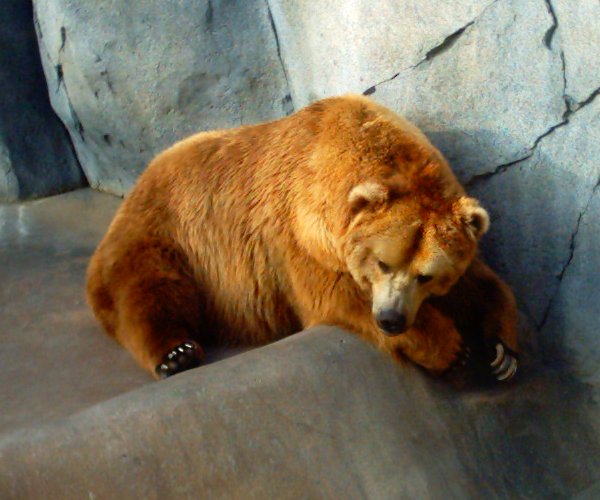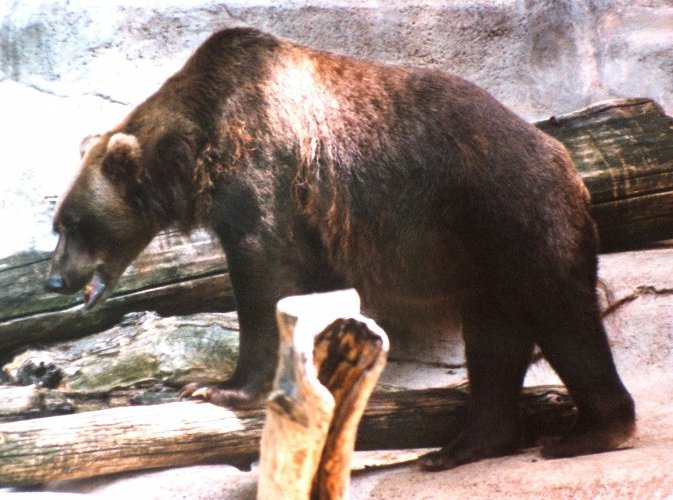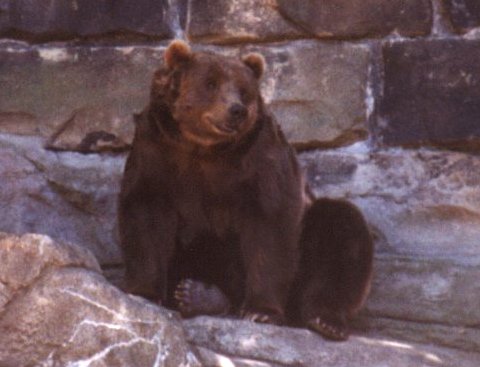 |
 |
| Ursus arctos gyas Alaskan Brown Bear; zoo of San Diego, California, March 2004 |
Ursus arctos horribilis Grizzly Bear; zoo of Grand Rapids, Michigan, August 2003 |
There are about 200.000 Brown bears in the world, distributed across much of northern Eurasia and North America. There are many subspecies of Brown bears, the smallest of which is the Syrian Brown bear, while the largest are the Kodiak bear and the bears from coastal Russia and Alaska. North American Brown bears seem to prefer open landscapes, whereas in Eurasia they inhabit mostly dense forests.
Young are born blind, helpless, and naked. They stay with their mother until at least the second spring of their lives. The male bears do not contribute to take care of them.
The Brown bear is mainly nocturnal. In the summer it can put on up to 180 kg of fat, on which it relies to make it through winter, when it becomes very lethargic. These bears are not full hibernators, but they like to den in a protected spot during the winter.
Brown bears are omnivorous (and not strictly carnivorous, as the name of their order implies). They eat several kinds of vegetal matter such as berries, roots, sprouts, fungi, and their main source of meat is fish. However, these bears will also kill small mammals and on occasion bigger ones such as deer.

Ursus arctos middendorffi
Kodiak Brown Bear; zoo of Pittsburgh,
Pennsylvania, August 2002
Genus Ursus
Family Ursidae
Superfamily Canoidea
Order Carnivora
Subclass Eutheria
Class Mammalia
Subphylum Vertebrata
Phylum Chordata
Kingdom Animalia
Life on Earth
Index